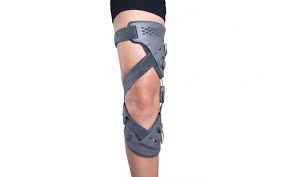The knee is one of the most crucial joints in our body, responsible for supporting our weight and enabling various movements. Unfortunately, it is also susceptible to injuries and conditions that can significantly impact our mobility and overall well-being. In such cases, an orthopaedic knee brace can be a valuable tool in enhancing stability, supporting the injured knee, and aiding in the recovery process.
An orthopaedic knee brace is specifically designed to provide optimal support and stability to the knee joint. It is commonly recommended for individuals recovering from knee injuries, such as ligament tears (ACL, MCL), sprains, or post-operative rehabilitation. By limiting excessive movements and providing external support, an orthopaedic knee brace helps protect the injured knee from further damage, allowing the body to heal effectively.
One of the primary benefits of an orthopaedic knee brace is its ability to enhance stability. It acts as an external support system for the knee, helping to control unwanted movements and reducing the risk of reinjury. The brace provides stability to the ligaments and tendons, ensuring that the knee joint is properly aligned during weight-bearing activities. This stability not only protects the injured knee but also instills confidence in the individual, enabling them to engage in daily activities and rehabilitation exercises with reduced fear of aggravating the injury.
Moreover, an orthopaedic knee brace offers a significant degree of immobilization when necessary. This is particularly important during the initial stages of injury recovery or after surgery, where limited movement is essential for proper healing. The brace helps keep the knee in the desired position, preventing excessive strain and allowing damaged tissues to repair themselves more effectively. As the healing progresses, the brace can be adjusted to gradually introduce controlled movements, aiding in the rehabilitation process.
In addition to stability and immobilization, an orthopaedic knee brace may offer adjustable features such as straps, hinges, or padding. These features allow for customization and can be tailored to individual needs and preferences. For example, hinges can provide additional support and limit certain ranges of motion, while adjustable straps enable users to achieve the desired level of compression and fit.
When considering an orthopaedic knee brace, it is essential to consult with a healthcare professional or orthopedic specialist. They can assess the severity of the injury, recommend the appropriate type of knee brace, and guide you on its proper usage and duration. Proper fit is crucial for optimal effectiveness, so following the manufacturer’s sizing guide and ensuring a snug fit is important.
In short, an orthopaedic knee brace plays a vital role in enhancing stability, supporting the injured knee, and aiding in the recovery process. Whether recovering from an injury, undergoing rehabilitation, or post-surgery, an orthopaedic knee brace provides external support, limits excessive movements, and instills confidence in individuals. By facilitating proper healing and allowing for controlled rehabilitation, it paves the way for a successful recovery and helps individuals regain their mobility and quality of life.



